Cloud application development refers to the process of crafting software applications hosted and operated within cloud infrastructure, distinct from traditional local servers or devices. Consequently, Cloud Computing services introduce a pliable and scalable milieu for deploying and managing applications, rendering it an increasingly favored choice for both enterprises and developers.

Foundational Elements of Cloud Application Development
The salient concepts and constituent elements integral to cloud application development are as follows:
a. Cloud Providers
Leading cloud providers, including Amazon Web Services (AWS), Microsoft Azure, Google Cloud Platform (GCP), and others, present an array of services and resources tailored for the hosting and administration of applications within cloud environments.
b. Virtualization
Within cloud application development, applications are executed in virtualized environments, enabling multiple applications to coexist on shared physical infrastructure, while remaining hermetically segregated.
c. Scalability
An inherent feature of cloud applications, scalability permits seamless expansion or contraction of application resources in response to demand fluctuations. This feat is accomplished through dynamic mechanisms such as auto-scaling, ensuring optimal resource allocation.
d. Microservices
A prominent architectural paradigm in cloud application development is the microservices approach. This methodology entails decomposing applications into discrete, independently deployable services that interact through network protocols.
e. Containers
Containerization, typified by Docker, furnishes a standardized encapsulation for applications and their dependencies. Consequently, the seamless transfer of applications between diverse environments, encompassing development, testing, and production, is facilitated.
f. Serverless Computing
The serverless paradigm, exemplified by AWS Lambda and Azure Functions, liberates developers from infrastructure management. It enables the creation and operation of applications sans resource provisioning, as platforms dynamically handle scaling and allocation.
g. APIs (Application Programming Interfaces)
Cloud applications frequently provide APIs, affording streamlined interactions and data exchanges amongst disparate applications or services, thereby promoting integration.
h. Database Services
Cloud providers extend an array of database services, encompassing relational databases, NoSQL databases, and data warehousing solutions, to cater to diverse data storage and management requisites.
i. DevOps
Cloud application development prominently integrates DevOps practices, which emphasize the automation and streamlining of the software development lifecycle, incorporating continuous integration, continuous delivery, and the utilization of infrastructure as code.
j. Security
Security is a paramount consideration in cloud application development. While cloud providers extend security features and tools, developers must also adhere to best practices to fortify application and data security.
k. Monitoring and Analytics
Cloud platforms equip developers with monitoring and analytics tools, which facilitate vigilant tracking of application performance, expedite issue identification, and culminate in insights conducive to optimizing application behavior.
Top Trends in Cloud Application Development
When developing cloud applications, developers choose the appropriate cloud provider, services, and architecture based on the specific requirements of their application and business needs.
Certainly, let's delve deeper into each of these trends in cloud application development:
1. Serverless Computing
Serverless computing abstracts away the infrastructure management, allowing developers to focus solely on writing code and implementing business logic. Platforms like AWS Lambda, Azure Functions, and Google Cloud Functions enable developers to build event-driven, scalable applications that automatically scale based on demand. This trend promotes cost savings by eliminating the need to provision and manage server resources when the application is idle.
Example: A company develops a chatbot for customer support using serverless functions. When users send messages, the functions process the messages, analyze intent, and provide appropriate responses. AWS Lambda or Azure Functions can be used to deploy the functions.
2. Microservices
Microservices architecture divides applications into smaller, loosely connected services that can be individually developed, deployed, and scaled, promoting agility and independence. This approach enhances agility, as teams can work on individual services without disrupting the entire application. Each service can be written in a different programming language and use appropriate technology stacks, optimizing performance for specific tasks.
Example: An e-commerce platform adopts a microservices architecture. It breaks down its application into services like user authentication, product catalog, payment processing, and order management. Each service is developed, deployed, and scaled independently to ensure optimal performance.
3. Containers and Kubernetes
Containers encapsulate applications along with their dependencies, guaranteeing uniform performance across various settings. Kubernetes, an open-source container orchestration platform, automates the process of deploying, scaling, and overseeing applications packaged as containers. Containers offer portability and isolation, making it easier to manage complex applications and services.
Example: A media streaming service uses Docker containers to package its application and dependencies. These containers are managed and orchestrated using Kubernetes, allowing the service to easily scale based on demand and ensure consistent user experiences.
4. Multi-Cloud and Hybrid Cloud
Multi-cloud strategies involve using services from multiple cloud providers to reduce vendor dependency and prevent service outages. Hybrid cloud solutions combine on-premises infrastructure with public and private cloud resources to optimize performance, scalability, and cost-effectiveness.
Example: An online gaming company employs a hybrid cloud approach. Game servers run on-premises, while player authentication and account management services are hosted on a public cloud platform. This setup ensures low-latency gameplay while leveraging cloud scalability.

5. Edge Computing
Edge computing moves computation closer to the data source or end-users, reducing latency and improving real-time processing. This is essential for applications that require rapid decision-making or data processing, such as IoT applications or real-time analytics.
Example: A smart city application uses edge computing to process data from IoT devices, such as traffic cameras and sensors. By analyzing data at the edge, the application can quickly detect traffic congestion and optimize traffic light patterns for better traffic flow.
6. Artificial Intelligence and Machine Learning Integration
Cloud providers offer AI and ML services that allow developers to integrate powerful capabilities like natural language processing, image recognition, recommendation systems, and more into their applications. These services enable applications to make data-driven decisions and provide enhanced user experiences.
Example: A healthcare application integrates machine learning to analyze medical images and diagnose diseases. It uses cloud-based AI services to process X-rays and MRIs, identifying anomalies and assisting medical professionals in making accurate diagnoses.
7. DevOps and CI/CD
DevOps practices involve collaboration between development and operations teams to streamline software delivery processes. Continuous Integration (CI) ensures that code changes are regularly integrated and tested, while Continuous Deployment (CD) automates the deployment of code changes to production environments. This approach enhances efficiency, reduces errors, and accelerates time to market.
Example: An online marketplace implements a DevOps pipeline with CI/CD. Developers commit code changes to a version control system, triggering automated testing and deployment. This ensures that new features and bug fixes are quickly deployed to production.
8. Security and Compliance
Cloud application developers focus on building secure applications by implementing best practices for authentication, authorization, data encryption, and secure API design. Compliance with industry regulations and standards is crucial, and cloud providers offer tools and services to help ensure applications meet security and compliance requirements.
Example: A financial institution develops a mobile banking app. It employs OAuth for secure authentication, encrypts sensitive data at rest and in transit, and adheres to industry regulations such as PCI DSS to ensure the security and privacy of customer financial information.
9. Serverless Databases
Serverless databases, also known as Database-as-a-Service (DBaaS), eliminate the need to manage database infrastructure. They automatically handle scaling, backups, and maintenance, allowing developers to focus on designing and querying databases without worrying about operational tasks.
Example: A social media platform utilizes a serverless database for user profiles. The database automatically scales based on user activity, handling storage and retrieval of profile information without requiring manual database management.
10. Low-Code/No-Code Development
Low-code and no-code platforms enable individuals with limited coding experience to create applications using visual interfaces and pre-built components. These platforms accelerate development and empower business users to quickly address specific needs without relying heavily on development resources.
Example: An HR department creates an employee leave request application using a low-code platform. HR personnel designs the application's workflows, user interfaces, and data models using visual tools, reducing the need for custom coding.
These trends reflect the ongoing evolution of cloud application development, driven by the need for efficiency, scalability, security, and faster time to market. As technology continues to advance, staying informed about these trends and their implications will be essential for successful cloud application development strategies.
Empowering Innovation through Cloud Application Development and Cutting-Edge Cloud Computing Services
Emorphis Technologies, a trailblazing player in the technology arena, stands at the forefront of this transformation, offering comprehensive Cloud Application Development services and a diverse range of Cloud Computing services and solutions.
Seamless Integration and Scalability
One of the key strengths of Emorphis Technologies lies in its expertise in providing seamless integration of cloud-based solutions into existing IT ecosystems. They understand the importance of synergy between cloud and on-premises systems, employing sophisticated techniques to ensure data integrity and interoperability. This integration strategy allows businesses to harness the power of cloud services while leveraging their current investments.
Custom Solutions for Optimal Efficiency
Emorphis Technologies is keenly aware that every business has unique requirements. Our cloud application development services are tailored to the precise needs of clients, incorporating features, also functionalities that drive efficiency and productivity. Through a blend of cutting-edge technologies and robust development practices, they craft cloud applications that elevate user experiences, also streamline operations.
Unlocking the Potential of Cloud Computing Services
In addition to their application development prowess, Emorphis Technologies offers an array of Cloud Computing services that enable businesses to tap into the full potential of the cloud. From Infrastructure as a Service (IaaS) and Platform as a Service (PaaS) to Software as a Service (SaaS) solutions, they provide a holistic approach to cloud adoption. Leveraging the inherent benefits of the cloud, such as elasticity, cost savings, and global accessibility, Emorphis Technologies empowers organizations to innovate and scale.
Data Security: A Paramount Concern
Emorphis Technologies prioritizes the security of its cloud solutions, recognizing the significance of safeguarding sensitive data in a digital landscape. Our cloud services are fortified with advanced security measures, encryption protocols, and regular audits to ensure data confidentiality and regulatory compliance.
Check with an article on Cloud Security Assessment
Partnering with Emorphis Technologies
A Transformational Journey Collaborating with Emorphis Technologies is more than just availing cloud services; it's embarking on a transformational journey towards technological advancement. With an unwavering commitment to excellence, innovation, and, also client satisfaction, Emorphis Technologies is poised to be the catalyst that propels businesses into a cloud-powered future. As industries evolve, Emorphis Technologies remains dedicated to delivering cloud solutions that not only meet the present demands but also pave the way for a prosperous tomorrow.




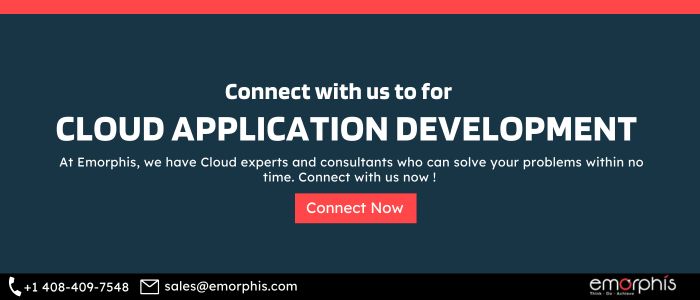
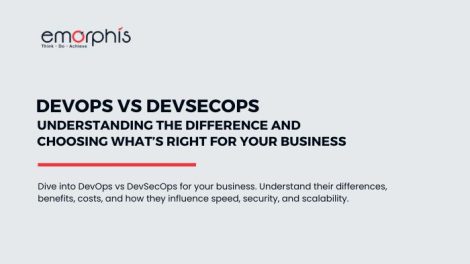
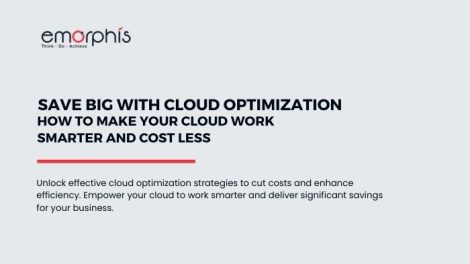
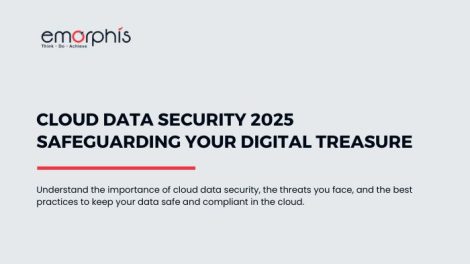
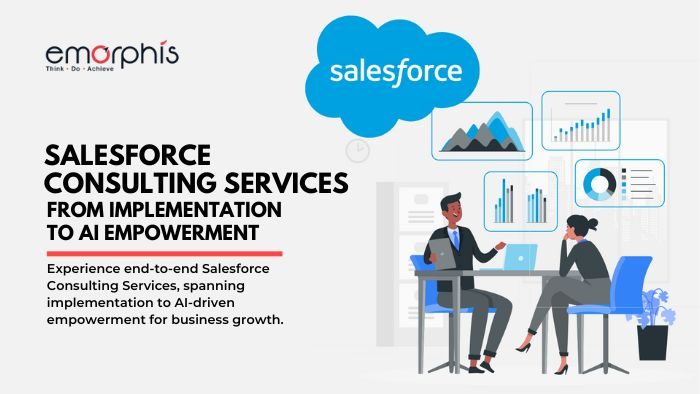
One Reply to “Top 10 Trends in Cloud Application Development”
Comments are closed.